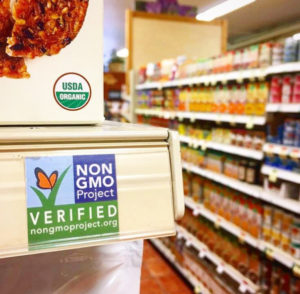Study argues consumers see ‘organic’ and ‘non-GM’ food labels as the same
Food labels such as “organic” and “non-genetically modified” can be confusing to consumers, according to a new study published in the journal Applied Economics: Perspectives and Policy.
In fact, researchers at the University of Florida and Purdue found that some consumers view the two labels as synonymous.
Brandon McFadden at the University of Florida’s Institute of Food and Agricultural Sciences and Purdue University agricultural economics professor Jayson Lusk conducted research to find the best ways to communicate whether a food has GM ingredients as part of food companies’ requirements under the National Bioengineered Food Disclosure Standard of June 2016,
What they found has implications for which foods consumers will buy, McFadden said.

To gauge consumers’ willingness to pay for food labeled as GM vs. non-GM, researchers conducted a national survey of 1,132 respondents.
Specifically, researchers wanted to know how much consumers were willing to spend on food labeled as “USDA organic” vs. that labeled “non-GMO project verified.” Genetically modified material is not allowed in food labeled “USDA organic,” while “non-GMO project” means the food has no more than 0.9 percent GM characteristics, according to the study.
The researchers measured respondents’ willingness to pay for a box of 12 granola bars and a pound of apples. Granola bars represent a manufactured food commonly differentiated by its absence of GM material, while apples are a fresh fruit that requires companies to tell if they contain GM material, the study said.
In the study, when consumers looked at packages of Granola bars labeled “non-GMO project,” they were willing to spend 35 cents more than for the boxes that had text that read, “contains genetically engineered ingredients.” With the “USDA organic” label, consumers were willing to pay 9 cents more.
With apples, respondents were willing to pay 35 cents more for those labeled “non-GMO project” and 40 cents more for those labeled “USDA organic.”
Participants’ responses led McFadden to conclude that consumers don’t distinguish definitions of the two food labels.
“For example, it’s possible that a product labeled, ‘non-GMO project verified’ more clearly communicates the absence of GM ingredients than a product labeled ‘USDA organic,’” said McFadden.







